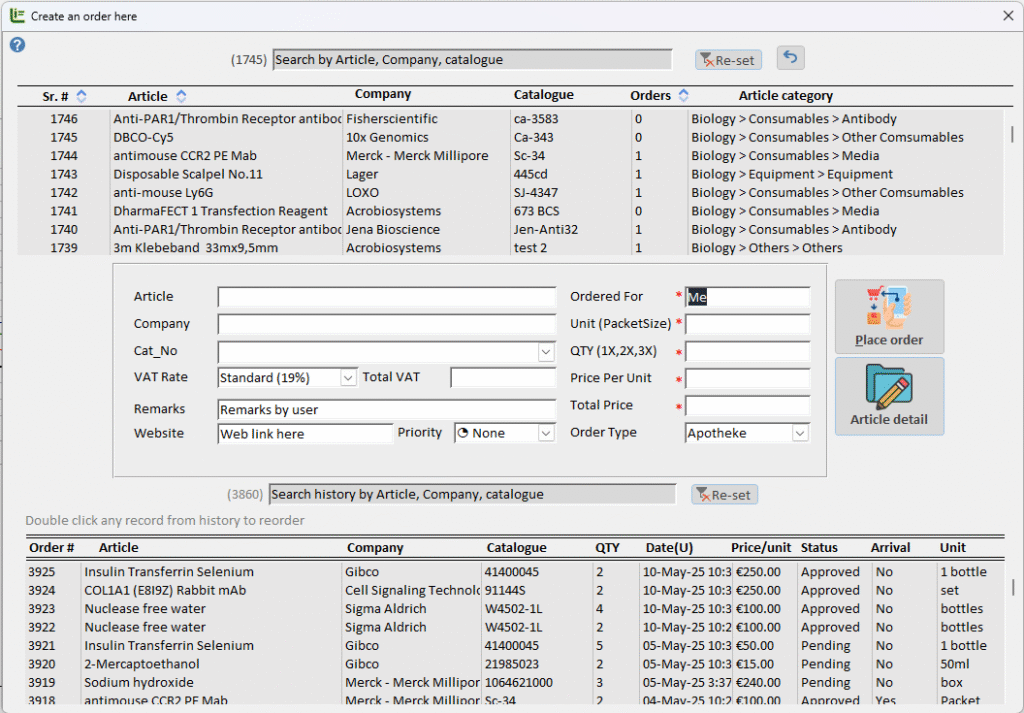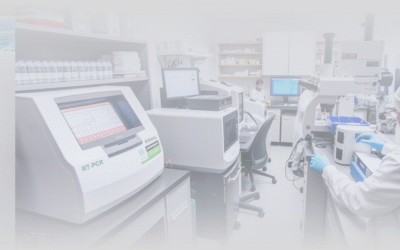Introduction
Manual vs. digital order tracking in research labs isn’t just a tech upgrade—it’s a fundamental shift in how labs manage time, resources, and transparency. Running a research lab is already a challenge: experiments fail, grants run dry, and time is always short. Now add to that: chasing purchase approvals, lost invoices, and the classic “who ordered this?” chaos.
In this post, we’ll show you a real-world breakdown of manual vs. digital order tracking in research labs, with side-by-side comparisons.
If your lab still tracks orders manually — using Excel, Word forms, paper sheets, or endless email threads — you’re not alone. But you’re also not efficient. And in the long run, that inefficiency costs time, money, and credibility.
Let’s break down how manual vs. digital order tracking compares in real-world lab settings — and why more research groups are making the switch to systems like LabInFlow.
1. Time Spent on Routine Tasks
Manual:
- You draft an order form in Word
- Email it to your supervisor for approval
- Wait 2–3 days for them to reply (if they remember)
- Once approved, someone else has to forward it to procurement
- Weeks later, someone asks: “Did we ever order that enzyme?”
Digital (LabInFlow):
- You create a request from a dropdown list
- Assign it to your project or fund
- Submit — it’s instantly routed to the approver
- They approve in one click (from laptop or phone)
- Status updates in real-time: Pending → Approved → Delivered

2. Transparency and Accountability
Manual:
- No clear record of who approved what
- Hard to find out when something was ordered or delivered
- If someone leaves the lab, their emails go with them
- No centralized history
Digital (LabInFlow):
- Every step is time-stamped: request, approval, delivery
- Anyone with access can see full history anytime
- Records stay in the system — not in inboxes
- You can export logs anytime
4. Multi-User Collaboration
Manual:
- Researchers send emails to the lab manager
- Lab manager emails PI
- PI emails admin
- Procurement emails vendor
- No one knows who’s doing what
Digital:
- Everyone has a role in the system
- Researchers: submit
- Lab managers: approve
- Admins: monitor all orders
- No duplication, no bottlenecks, no micromanaging
5. Compliance and Audits
Manual:
- Paper receipts, PDF invoices, printed forms — scattered
- Weeks of compiling reports when funders ask
- Stress and risk of missing files
Digital:
- Every order and invoice is linked and searchable
- Filter by date, supplier, fund, user
- Audit logs ready in minutes
- GDPR-compliant, secure records
6. Human Factor: What It Feels Like
Manual:
- Frustration. Delays. Confusion.
- You repeat the same questions weekly:
- “Where is this order?”
- “Who approved it?”
- “Was this even ordered?”
Digital:
- Clarity. Control. Peace of mind.
- You can finally focus on research, not admin.
- Lab life just feels more organized.
Final Verdict: Manual is Costly. Digital is Smart.
Yes, change takes effort. But not changing is worse.
Manual order tracking may seem “good enough” — until you waste hours chasing forms, overspend on grants, or delay a project due to missing reagents.
A digital Order Management System like LabInFlow brings structure, speed, and sanity to your lab’s procurement workflow. It’s built for research labs, not generic companies.
Want to See the Difference Yourself?
📌 Try a free demo of LabInFlow — no installation, no commitment. Want to know how it works?
💬 Or contact us for a walkthrough tailored to your lab’s needs. Looking for a catalogue? or Watch 12Min Demo video.
Make the switch. Save time. Focus on science.



